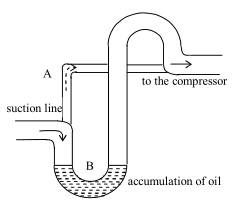Pressurized oil atomization is used for smaller capacity burners. The nozzle is located at the end o...
oil gun. In the nozzle a number of small holes are oriented to assure the rotating flow for atomizing and
spraying the oil in the most efficient way.
As the geometry of the nozzle is fixed the velocity in the small holes and slits in the nozzle depends
upon the load on the burner. The higher load the higher velocity and thereby the better atomization. On the
other hand this means that the lower load the lower velocity and thereby the poorer atomization. Typically
pressurized jet atomization is efficient for a turndown ratio 1:2, i.e. 50 % load. At lower load, the
atomization will not be satisfying and this means non-satisfying combustion quality eventually causing soot
formations. The oil pressure varies between 0.5 and 2.0 MPa. As mentioned ensuring the correct
distribution of air and fuel is vital for the combustion efficiency. One of the most important parameters that
affects the combustion of the oil heavily is the angle of atomization that is a characteristic parameter for the
specific nozzle. For the pressurized jet burners the swirl of the combustion air is created by means of a
swirler. Depending upon the nozzle the required normal operation pressure for the pressurized jet burners is
approx. 2.0 MPa.
参考解析:
1. According to paragraph 1, we can draw a conclusion that____.
A. the fuel oil should be filtered before being supplied to a pressurized jet burner
B. the pressurized jet burner is suitable for waste oil.
C. the pressurized jet burners can be used for higher capacity boilers
D. all of the above
2. For a certain pressurized jet burner, what is the factor that determines the fuel oil velocity in the small holes and slits in the nozzle?
A. the geometry of the nozzle
B. the load on the burner
C. the temperature of the fuel oil
D. the number of holes in the nozzle
3. Which of the following statements is NOT true?
A. the higher the burner load is, the higher the fuel oil velocity in the small holes is
B. the higher the burner load is, the lower the fuel oil velocity in the small holes is
C. the lower the burner load is, the lower the fuel oil velocity in the small holes is
D. the higher the burner load is, the better the atomization of fuel oil is
4. What is the most important for the combustion efficiency?
A. the angle of atomization
B. the load of the burner
C. the correct distribution of air and fuel
D. the velocity in the small holes and slits in the nozzle


 百度扫一扫练题
百度扫一扫练题
 关注千题库公众号
关注千题库公众号








